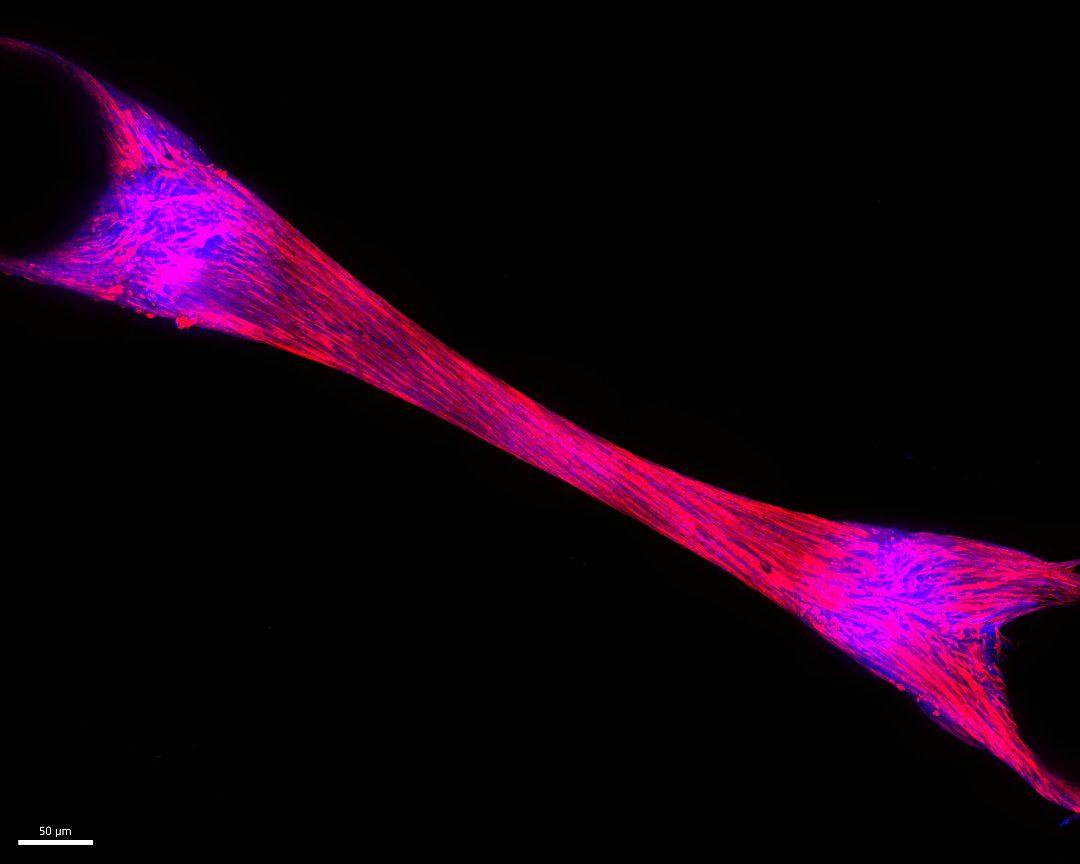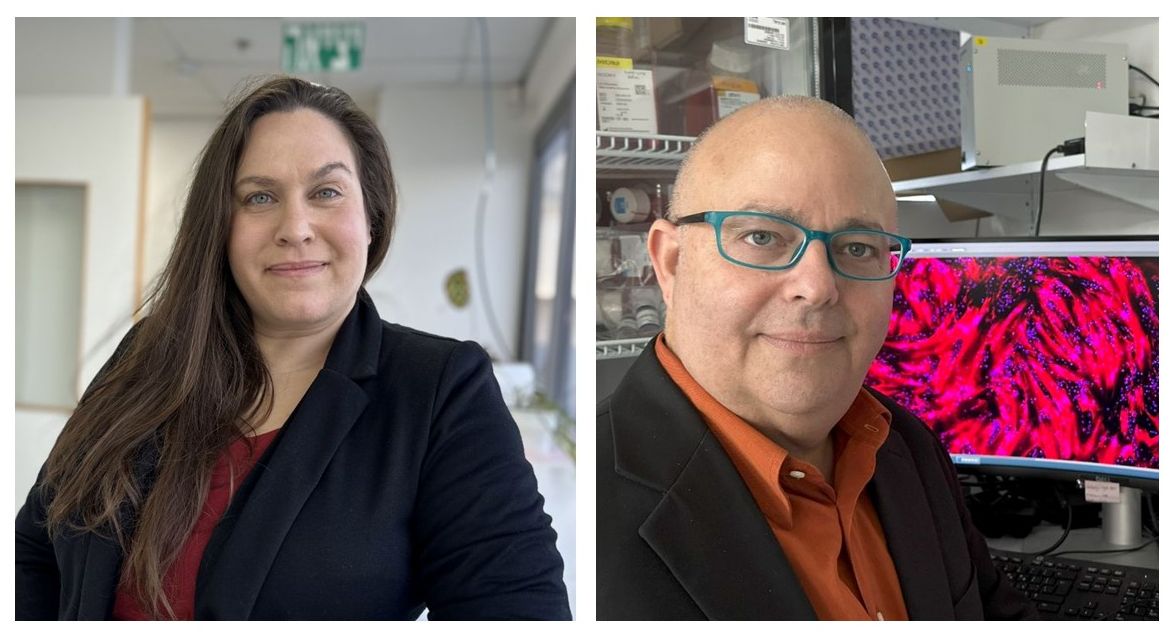ProFuse Technology—an Israeli startup best-known for media supplements that increase the speed and efficiency of muscle tissue formation in cultivated meat—has launched a high throughput screening platform for skeletal muscle related drug discovery.
One well-publicized and potentially troubling side effect of GLP-1 drugs is a loss of lean muscle mass that frequently accompanies rapid weight loss, prompting a surge of interest in drugs and supplements that can attenuate the problem.
Through its skeletal muscle tissue cultivation platform, ProFuse Technology can screen thousands of molecules to identify promising candidates it can then license to drug companies for further validation, says the firm, which says its cell culture media supplements have proved just as effective on human cells as they have on animal cells.
While drug companies have developed their own in-vitro models to test their products, CTO Dr. Tamar Eigler-Hirsh told AgFunderNews, the human muscle fibers created by ProFuse “demonstrate a significantly higher level of maturity,” which leads to the generation of more “biologically relevant” muscle tissue, more quickly.
“Growing mature muscle tissue in the lab is not easy and the muscle tissue we produce is really better than anything that can currently be made in the life sciences space, where they typically use mouse cell lines for this kind of testing, which have their limitations,” claimed Eigler-Hirsh.
“With mature muscle fibers, we can model muscle diseases and muscle atrophy, plus we’ve also engineered human cell lines to express specific reporters associated with biomarkers that are increased with these disease conditions. This means we can track the progression of these diseases in-vitro in real time.”
As ProFuse can grow “intact muscle fiber in between pillars in a three-dimensional space,” it can also measure muscle functionality (eg. contractions) and how much force the muscle has, said Eigler-Hirsh.
“We have also developed software that allows us to take images of hundreds of thousands of cells, analyze them within a fraction of a second and spit out tons of data showing how efficient the differentiation is, how mature the muscle fibers are, what is the size of the fibers, and so forth.”

Is enabling tech for cultivated meat too risky a bet right now?
ProFuse Technology’s work on cell lines and media supplements for cultivated meat is still proceeding, said CEO Guy Nevo Michrowski, but it will not generate returns quickly enough to keep ProFuse in business in the short and medium term.
“We’ve made a lot of progress in this market—so for example [cultivated meat startup] SuperMeat is working with us, and we’ve shown our supplements work on chicken, beef, pork, lamb and fish. We’ve completed our toxicology work with the final reports due in April, so we will then be able to provide customers with a full safety dossier,” added Michrowski, who recently secured a Euro €2.4 million ($2.5 million) grant from the European Innovation Council to further develop its tech for cultivated meat.
That said, it has been clear for some time that the nascent, and chronically underfunded, cultivated meat industry is not going to start generating meaningful returns for ProFuse for several years, he said.
“We realized quite a while ago that the cultivated meat industry will need more time to scale up, especially when it comes to muscle, so we started thinking about how we were going to mitigate this risk. I think meaningful revenue will not come in less than five years, because it’s not enough for our customers to have a product in the market, we need them to generate good volumes in order for us to earn sufficient revenue. So we started thinking about what else we can do.
“From day one, we always said we are the muscle cultivation experts; we never said we were a cultivated meat company. So we have been asking, how can we leverage this?
“We came to the conclusion that what we want to do is to use our capabilities to become a drug discovery company, as interest in skeletal muscle is actually exploding for two reasons: GLP-1 drugs and the loss of lean muscle mass; and age-related loss of muscle mass [sarcopenia]. The latter also impacts your metabolism; the more muscle you have, the better you are metabolizing glucose.”
Filtering out drugs that likely will not be effective in-vivo
ProFuse Technology will focus initially on muscle wasting but is also looking at insulin resistance and diabetes, said Eigler-Hirsh.
“Many companies, when they have a drug candidate in hand, will go straight to animal testing” because the in-vitro cell cultivation platforms they have do not generate very accurate results when testing for things like insulin sensitivity because the muscle tissue is not mature enough, she claimed.
“But those animal studies can be very, very expensive, and a lot of times they end up not working [because the candidates could not be properly validated in-vitro]. We provide a very nice alternative to avoid early studies in animal models that might be wasteful. Essentially, we can use our system to filter out drugs that likely won’t be effective in-vivo.”
The business model
Michrowski added: “We are not a service company. Our business model would be licensing drug candidates to drug companies, who would then conduct further research and take the drugs to market. We will create our own pipeline of drug candidates and take them all the way to probably, at least pre-clinical experiments on animals, and maybe even phase one trials. That’s typically when you get those deals done. You license the molecule to the drug company and they take it forward.”
While the timeline for identifying a promising candidate is likely to be “three to four years at least,” he said, investors understand this model, whereas many remain wary of cultivated meat.
According to Eigler-Hirsh: “The leading target right now for drugs that are in clinical trials [to tackle muscle wastage] is myostatin [a protein that acts as a negative regulator of muscle growth]. So there’s a bunch of myostatin inhibitory antibodies that are being tested. The activin receptor [which regulates growth, differentiation, and homeostasis in various tissues, including muscle] is another target.
“But there’s a huge blue ocean of downstream targets that haven’t been looked at yet for novel drugs, and that’s where we’re focusing our energies.”
Further reading:
How are GLP-1 drugs impacting spending on food and dietary supplements?
GLP-1 users’ grocery spending drops, but then levels out after 12 months – Circana data




